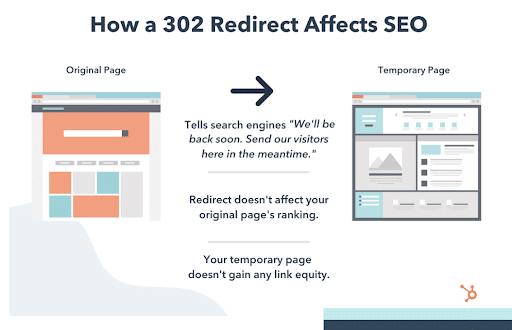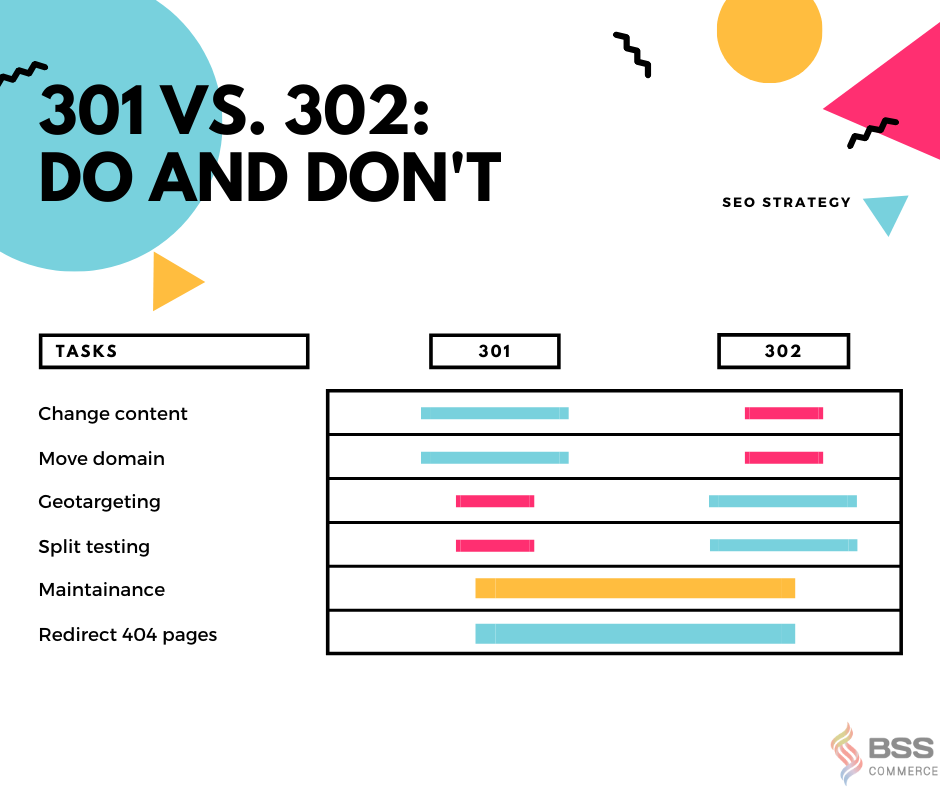Learn about the mysteries of 302 redirects and how they impact your website’s SEO and user experience in this guide.

Image courtesy of via DALL-E 3
Table of Contents
Welcome to the exciting world of web traffic! Have you ever wondered how websites work and how they can take you to different places on the internet? Well, one important aspect of websites that you might not know about is something called 302 redirects. In this fun and simple guide, we’ll explore what 302 redirects are and why they are essential for websites.
When you click on a link or type a web address into your browser, you expect to be taken to the right place on the internet, right? But sometimes, websites need to make temporary changes or updates that can affect how you navigate through them. This is where 302 redirects come into play, helping ensure that you reach the right destination even when things behind the scenes are changing.
What is a 302 Redirect?
When you try to visit a website, sometimes you might be taken to a different web address than the one you clicked on. This magic trick is done using something called a 302 redirect.
Basic Definition
A 302 redirect is like a temporary detour sign on the internet highway. It tells your browser, “Hey, the web address you want to go to has temporarily moved, so follow me instead.”
Temporary vs. Permanent
There are two types of redirects: temporary (302) and permanent (301). Think of a permanent redirect like moving into a new house and updating your address everywhere. On the other hand, a temporary redirect is more like staying at a friend’s house for a short while until your new place is ready.
Why Use 302 Redirects?
When it comes to making changes to a website, using 302 redirects can be incredibly useful. Let’s explore some scenarios where these temporary redirects can come in handy.
During Website Updates
Imagine you’re giving your website a makeover, changing the layout, adding new features, or updating content. During this process, some pages might need to be temporarily redirected to different URLs. By using a 302 redirect, you can ensure that your users are still able to navigate your site smoothly while these updates are in progress.
User Testing
Another great use of 302 redirects is for user testing. Let’s say you’ve created a new page that you want to try out, but you’re not sure if it’s ready to replace the existing page. By setting up a temporary redirect, you can direct a small group of users to the new page without changing the main navigation for everyone else. This way, you can gather feedback and make improvements before fully launching the new page.
How to Implement a 302 Redirect
Implementing a 302 redirect on your website is an essential skill for website owners. It allows you to temporarily redirect users from one web page to another without affecting your search engine rankings. Below are two methods you can use to set up a 302 redirect on your site.

Image courtesy of via Google Images
Changing Website Code
To implement a 302 redirect, you can modify the code of your website. If you’re using a content management system (CMS) like WordPress, there are plugins available that can help you set up redirects easily. For those comfortable with coding, you can manually add the redirect code to your .htaccess file. Simply add the following line of code to set up a 302 redirect:
Redirect 302 /old-page.html http://www.yourwebsite.com/new-page.html
Replace ‘/old-page.html’ with the URL of the page you want to redirect from and ‘http://www.yourwebsite.com/new-page.html’ with the URL of the page you want to redirect to. This will ensure that users who try to access the old page are redirected to the new page.
Using HTTP Headers
Another way to implement a 302 redirect is by using HTTP headers. This method is more technical but offers precise control over the redirection process. You can set up a 302 redirect by configuring the server to send a specific HTTP header response when users access the old URL. Here’s an example of how to set up a 302 redirect using HTTP headers:
HTTP/1.1 302 Found Location: http://www.yourwebsite.com/new-page.html
By sending the ‘302 Found’ header along with the new page URL, you inform the browser that the requested page has temporarily moved to the new location.
Common Mistakes to Avoid
When setting up 302 redirects for your website, it’s important to be aware of common mistakes that can occur. By understanding these pitfalls, you can ensure a smooth user experience and prevent any issues that may arise. Let’s take a look at some of the most frequent mistakes to avoid when implementing 302 redirects:
Wrong Type of Redirect
One common mistake when using 302 redirects is selecting the wrong type of redirect. If you mistakenly choose a permanent (301) redirect instead of a temporary (302) one, search engines will treat the redirection as permanent. This can have negative consequences on your website’s SEO and traffic, as search engines will index the redirected page as the new URL. Always double-check that you are using the appropriate redirect type to avoid any confusion or negative impact on your site.
Infinite Redirect Loops
Another issue to watch out for is the occurrence of infinite redirect loops. This happens when a page is set to redirect to another page, which in turn redirects back to the original page, creating a never-ending loop. Infinite redirect loops can frustrate users and confuse search engines, leading to a poor user experience and potential SEO penalties. To prevent this, carefully review your redirect configurations and ensure that they direct users to the intended destination without looping back to the starting point.
Impact on SEO
When it comes to understanding the impact of 302 redirects on SEO, it’s crucial to recognize how search engines like Google handle these temporary redirects. These redirects signal to search engine crawlers that the change is not permanent and that the original URL should still be indexed. This means that search engines will continue to display the original URL in search results, ensuring that your web traffic is directed to the right place.

Image courtesy of via Google Images
Search Engine Behavior
Search engines are smart enough to distinguish between temporary (302) and permanent (301) redirects. With a 302 redirect, search engines understand that the change is only temporary and that the original URL should still be considered the primary page. This helps maintain the SEO value of the original page while providing users with the most relevant content.
Page Rankings
Since 302 redirects are temporary in nature, they generally do not have a significant impact on your web page rankings. Search engines will continue to attribute the SEO value of the original URL to the redirected page. However, it’s essential to note that if temporary redirects are used excessively or incorrectly, it could potentially confuse search engines and affect your overall SEO strategy. Therefore, it’s important to use 302 redirects judiciously to avoid any negative consequences on your search engine rankings.
Testing Your Redirect
Once you have set up a 302 redirect on your website, it is crucial to test it to ensure that it works as intended. Testing your redirect will help you avoid any potential issues that could arise and guarantee a smooth user experience. Here are two methods you can use to test your redirect:
Built-in Browser Tools
Most web browsers come equipped with built-in tools that can help you check if your redirect is functioning correctly. One simple way to test your redirect is by typing the original URL into the browser’s address bar and hitting enter. If the redirect is working properly, you should be automatically redirected to the new web address. This quick and easy method can give you a basic idea of whether your redirect is functioning as intended.
External Testing Services
If you want a more comprehensive analysis of your redirect, you can use external testing services available online. These tools can provide detailed reports on how your redirect is performing, including information on response times, server headers, and any potential issues that may need addressing. By utilizing these external services, you can ensure that your redirect is set up correctly and is delivering the desired results.
Advanced Tips and Tricks
For those who have a good grasp of web management, here are some advanced tips and tricks to enhance your understanding of 302 redirects.

Image courtesy of via Google Images
Conditional Redirects
Conditional redirects allow you to redirect users based on specific conditions or criteria. This can be particularly useful if you have different versions of your website for different regions or languages. By setting up conditional redirects, you can ensure that users are directed to the most relevant content based on their location or language preferences.
Tracking Redirects
Tracking redirects involves using analytics tools to monitor and analyze the performance of your redirects. By tracking the effectiveness of your redirects, you can gain valuable insights into how users are interacting with your site and whether the redirects are achieving their intended goals. This data can help you make informed decisions about optimizing your redirection strategy for better user experience and web traffic.
Summary
Throughout this article, we have explored the world of 302 redirects and their significance for websites. We learned that a 302 redirect is a temporary way to direct users from one web address to another. Unlike permanent redirects (301), the 302 redirect is used for short-term changes or testing purposes.
Key Points:
1. 302 redirects act as temporary guides for web traffic, ensuring users reach the right destination even during website updates.
2. Implementing a 302 redirect involves modifying website code or utilizing HTTP headers to set up the redirection effectively.
3. It is crucial to avoid common mistakes like choosing the wrong type of redirect or falling into infinite redirect loops to maintain a smooth user experience.
4. The impact of 302 redirects on SEO involves understanding how search engines interpret these redirects and their effects on page rankings.
5. Testing the functionality of 302 redirects is essential, with built-in browser tools and external testing services available for this purpose.
6. For those comfortable with web management, advanced tips like conditional redirects and tracking redirects using analytics can enhance the redirect strategy.
By mastering the art of 302 redirects, website owners can better navigate changes, maintain user navigation, and optimize their site for improved performance. Remember, redirecting with precision is the key to keeping web traffic flowing smoothly!
Want to turn these SEO insights into real results? Seorocket is an all-in-one AI SEO solution that uses the power of AI to analyze your competition and craft high-ranking content.
Seorocket offers a suite of powerful tools, including a Keyword Researcher to find the most profitable keywords, an AI Writer to generate unique and Google-friendly content, and an Automatic Publisher to schedule and publish your content directly to your website. Plus, you’ll get real-time performance tracking so you can see exactly what’s working and make adjustments as needed.
Stop just reading about SEO – take action with Seorocket and skyrocket your search rankings today. Sign up for a free trial and see the difference Seorocket can make for your website!
Frequently Asked Questions (FAQs)
Can a 302 Redirect Hurt My Website?
Don’t worry! A 302 redirect won’t hurt your website. It’s actually a tool used to help temporarily direct visitors to a different web address. Think of it like giving someone temporary directions to a new location until they can find their way on their own.
How is a 302 Different from a 301?
Great question! The main difference between a 302 redirect and a 301 redirect is that a 302 redirect is temporary, while a 301 redirect is permanent. It’s like rearranging furniture in your room for a day versus moving to a new house forever.







